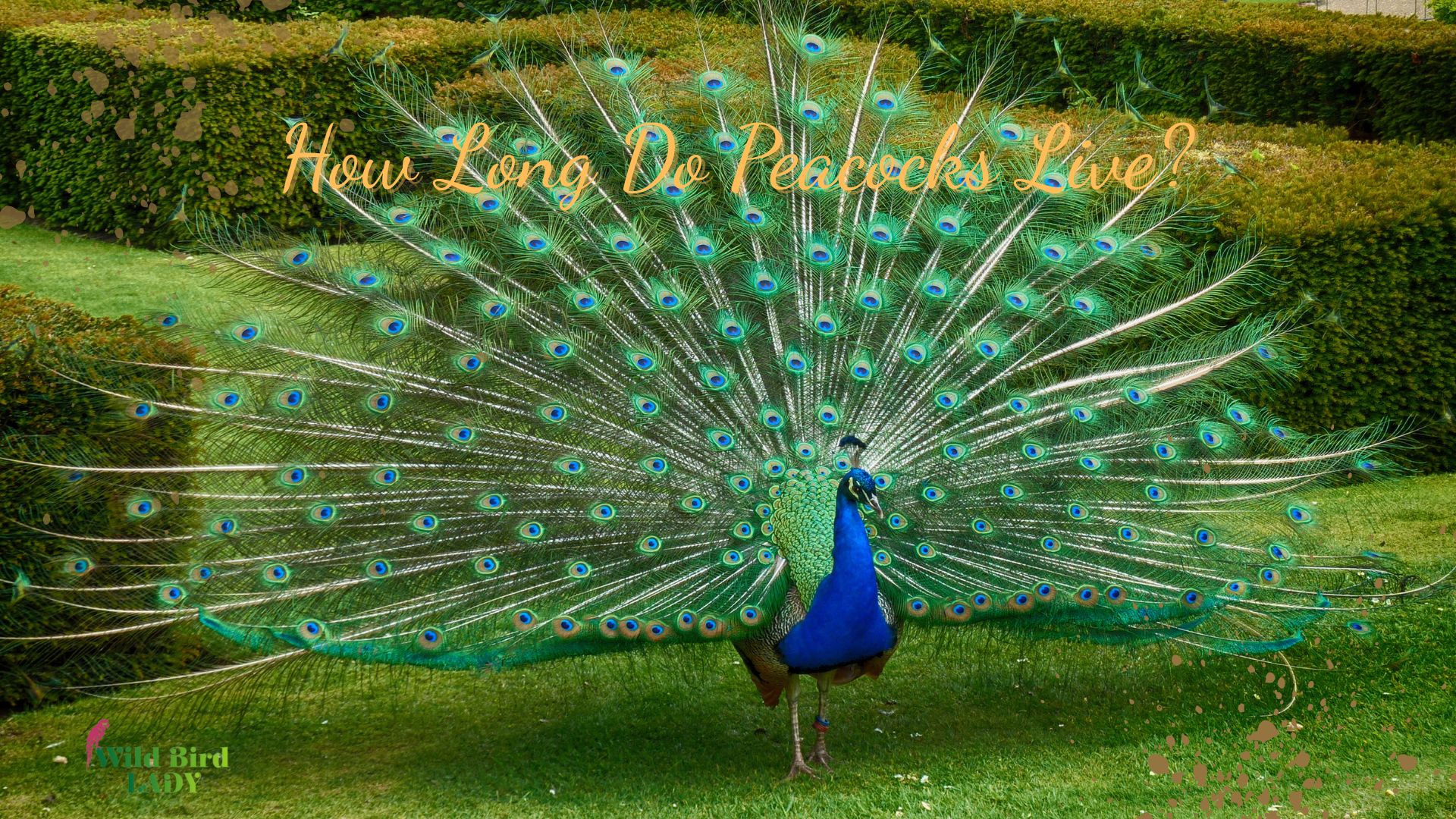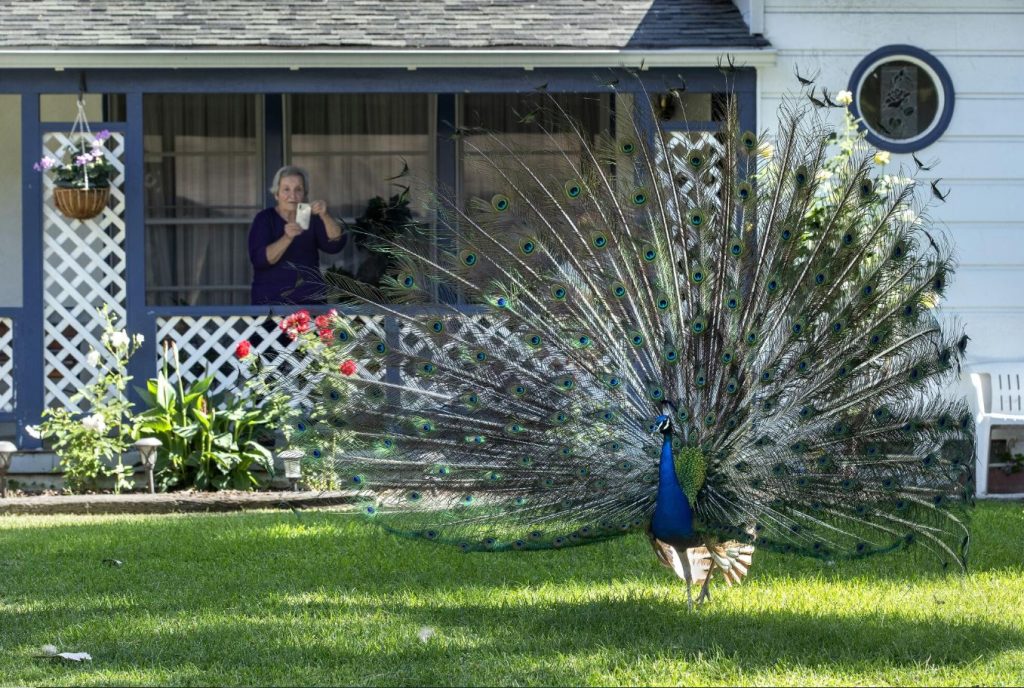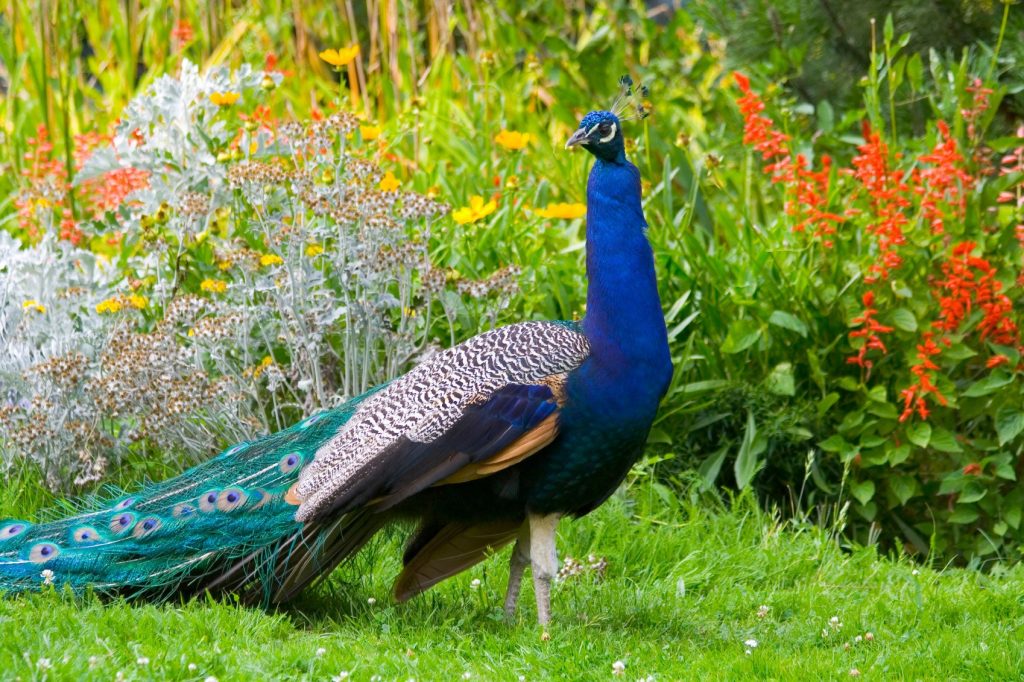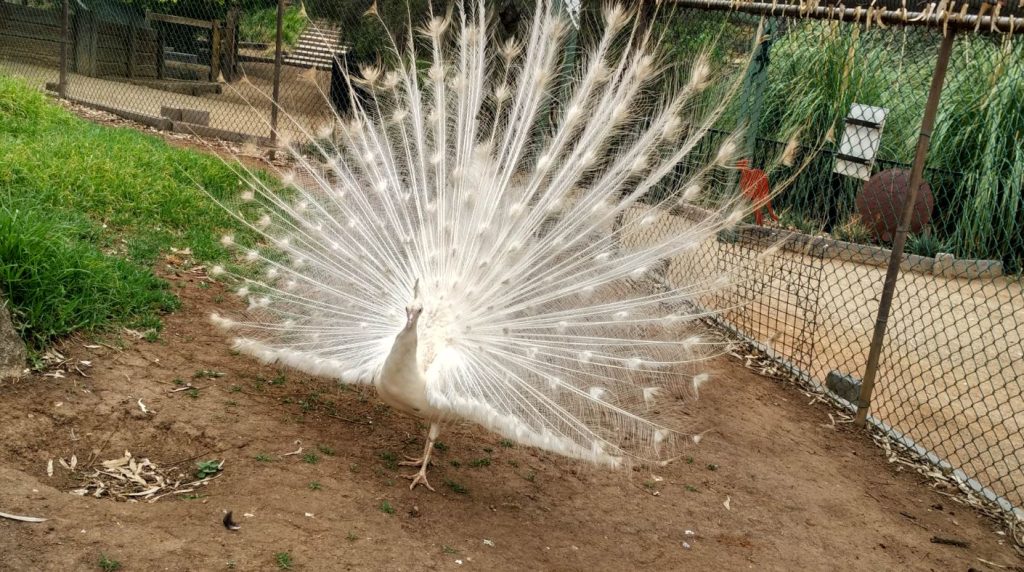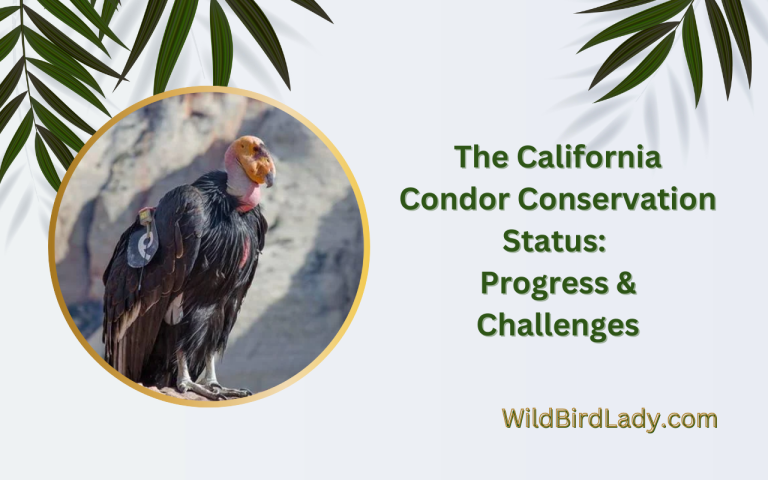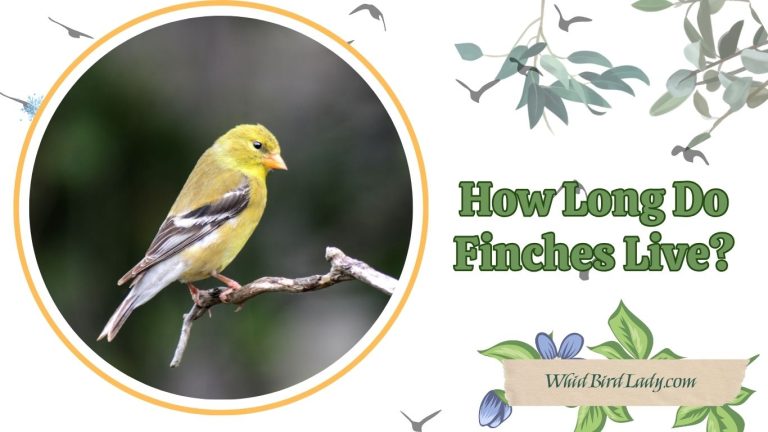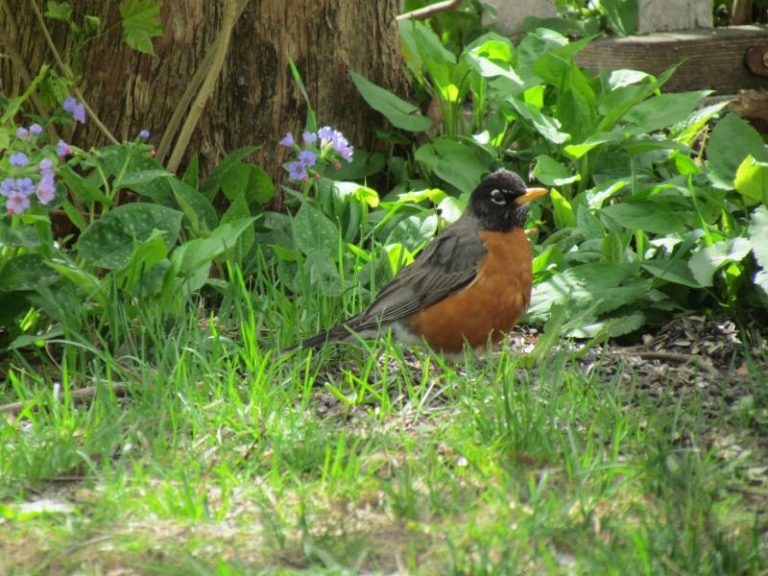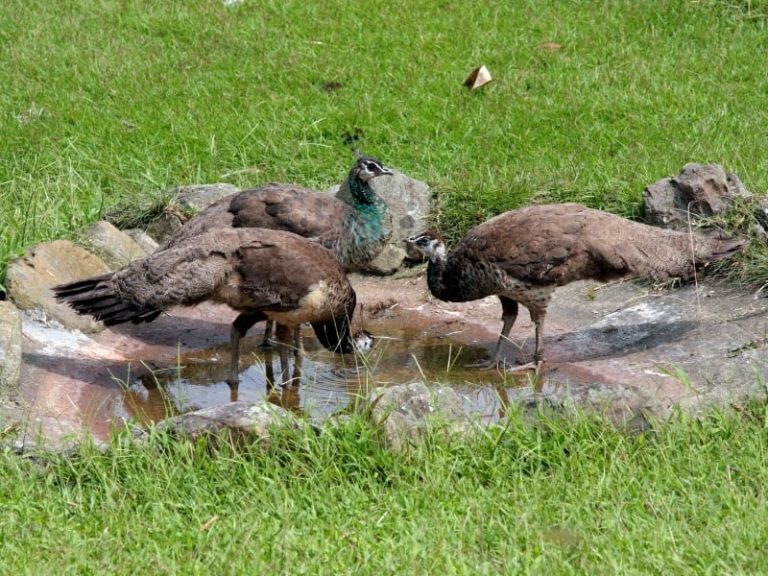Peacock Lifespan: Wild vs. Captive – Which Lives Longer and Why?
Peacocks are some of the most iconic birds on Earth—renowned for their dazzling plumage and striking displays. But beyond their beauty lies a fascinating question many bird lovers ask: how long do peacocks live? The answer isn’t so straightforward. The peacock lifespan varies widely depending on environment, diet, and predator exposure—especially when comparing wild and captive birds.
In this comprehensive guide, we’ll dive deep into everything you need to know about peacock lifespan, comparing wild and captive lifespans, examining what influences their longevity, and providing practical insights from avian experts.
Quick Answer: How Long Do Peacocks Live?
- In the wild: 10–15 years on average
- In captivity: 20–25 years, sometimes longer with proper care
These figures reflect general observations across multiple species of peafowl, particularly the Indian peafowl (Pavo cristatus)—the most widely recognized and studied species.
Meet the Peacock: Species Overview
Before we go further, it’s important to note that “peacock” refers to the male of the species. The correct term for both sexes is peafowl:
- Male: Peacock
- Female: Peahen
- Young: Peachick
There are three main species of peafowl:
- Indian Peafowl (Pavo cristatus) – native to the Indian subcontinent
- Green Peafowl (Pavo muticus) – found in Southeast Asia
- Congo Peafowl (Afropavo congensis) – native to the Congo Basin in Africa
Each species has slightly different lifespans and environmental needs. However, the Indian peafowl is the most common in both wild and captive settings, and most lifespan data revolves around this species.
Peacock Lifespan in the Wild
So, how long do peacocks live in the wild? Typically, they reach an average of 10 to 15 years, but survival beyond that range is rare without ideal conditions.
Factors That Limit Wild Peacock Lifespan
1. Predators
Peafowl are ground-dwelling birds, which makes them vulnerable to a range of predators:
- Big cats (like leopards)
- Jackals and foxes
- Birds of prey
- Snakes (especially targeting peachicks)
Because of this, many peachicks never reach adulthood, significantly lowering average lifespan estimates in the wild.
2. Habitat Loss
Urbanization, agriculture, and deforestation are rapidly shrinking peafowl habitats, especially for the endangered Green Peafowl. This forces them into fragmented areas where survival is harder.
3. Food Scarcity
Wild peacocks rely on a diverse diet of seeds, fruits, small reptiles, and insects. Droughts or loss of food-rich areas can cause malnutrition and reduce lifespan.
4. Diseases and Parasites
Without medical care, wild birds are prone to infections, parasites, and injuries. A single untreated wound or infestation can shorten a peacock’s life significantly.
Peacock Lifespan in Captivity
Captive peafowl live in more controlled environments. With fewer threats and access to veterinary care, their lifespan increases dramatically.
Average Captive Lifespan: 20–25 Years
Some well-cared-for individuals have been reported to live even longer—up to 30 years in rare cases.
Why Captive Peacocks Live Longer
1. No Predators
Captive birds don’t face natural predators, reducing stress and the chance of sudden death.
2. Consistent Food and Water
In captivity, peafowl enjoy a reliable diet. They often eat high-quality grains, greens, fruits, and protein sources like mealworms.
3. Medical Attention
Routine checkups, parasite control, and treatment of injuries significantly improve overall health.
4. Shelter and Protection
Well-designed enclosures keep birds safe from harsh weather, theft, and accidents. Heated barns in colder regions help prevent frostbite and respiratory issues.
Comparison Table: Wild vs. Captive Peacock Lifespan
| Factor | Wild Peafowl | Captive Peafowl |
|---|---|---|
| Average Lifespan | 10–15 years | 20–25 years |
| Predator Threat | High | None |
| Diet Quality | Variable | Consistent & Balanced |
| Disease Risk | High | Low (with veterinary care) |
| Reproduction Success | Moderate to Low | High (controlled breeding) |
When Do Peacocks Reach Maturity?
Peacocks are slow to mature compared to many birds.
- Peahens begin breeding at around 2 years old
- Peacocks don’t grow their full train (long tail feathers) until age 3 and usually breed successfully from that point on
This long maturation process is part of why the peacock lifespan is longer than many smaller birds.
Do All Peacock Species Live the Same Length?
No. Each species has a slightly different lifespan:
| Species | Lifespan (Wild) | Lifespan (Captive) |
|---|---|---|
| Indian Peafowl | 10–15 years | 20–25+ years |
| Green Peafowl | 8–12 years | 15–20 years |
| Congo Peafowl | 6–10 years | 12–15 years |
The Indian peafowl lives the longest in both environments due to its adaptability and widespread care in captivity.
How Long Do Peacocks Live in Zoos?
In well-managed zoos, peacocks receive expert care, ideal diets, and freedom from natural stressors. It’s not uncommon for zoo-housed peacocks to live 25 to 30 years with proper husbandry.
According to data from institutions like the Cornell Lab of Ornithology and observations shared by breeders and wildlife parks, good record-keeping, medical care, and environmental enrichment contribute significantly to peacock longevity.
What Affects a Peacock’s Lifespan Most?
The peacock lifespan—whether in the wild or captivity—is shaped by a combination of environmental, biological, and management factors. Understanding these influences helps bird keepers, conservationists, and enthusiasts support longer, healthier lives for these majestic birds.
Let’s take a closer look at the five most important factors:
Genetics: The Foundation of Longevity
Just like in humans, genetics lay the foundation for a peacock’s overall health and lifespan. Birds from strong, diverse genetic lines are typically more resistant to diseases, deformities, and developmental issues. In contrast, inbreeding—common in small or poorly managed populations—can lead to inherited weaknesses that shorten life expectancy.
In captivity, selecting healthy breeding pairs and avoiding close-relative matings helps maintain robust offspring. In the wild, genetic diversity is naturally preserved by larger populations and wider gene flow, although habitat fragmentation can pose a threat.
Expert Tip: Responsible breeders often keep detailed records of lineage to ensure genetic health—an important step in extending the lifespan of peafowl in captivity.
Diet: Fueling a Long, Vibrant Life
A balanced and nutrient-rich diet is essential to peacock longevity. In the wild, peafowl forage for a variety of foods—grains, seeds, berries, insects, and even small reptiles. This diversity provides essential vitamins and minerals, including:
- Vitamin A for immune health and vision
- Vitamin D3 for calcium absorption and bone strength
- Vitamin E for reproductive health and feather condition
In captivity, the diet must be carefully managed. Peacocks should be offered high-quality game bird pellets, leafy greens, fresh fruits, and protein sources like mealworms or cooked eggs.
Poor diet—too much corn, stale bread, or low-nutrient feed—can lead to obesity, weak bones, poor feather quality, and even reproductive failure.
According to the Cornell Lab’s All About Birds, birds that maintain a well-balanced, species-appropriate diet are better equipped to fight off illness and live significantly longer.
Space & Environmental Enrichment
Peacocks are not just ornamental—they’re active, curious birds that need plenty of space to thrive. In the wild, they roam across forests and fields. Restricting their movement in small cages or barren enclosures causes stress, boredom, and health issues.
Providing enough space (at least 80–100 square feet per bird), perches for roosting, and visual barriers to reduce tension between individuals all contribute to a healthier, longer life.
Environmental enrichment is equally important:
- Add logs, branches, and varied terrain
- Offer puzzle feeders or scatter food to encourage foraging behavior
- Allow supervised free-ranging if possible
Without stimulation, captive peacocks may develop neurotic behaviors like pacing, over-preening, or feather plucking—all signs of stress that can shorten lifespan.
Stress Levels: The Silent Lifespan Killer
Chronic stress is one of the most underrecognized threats to the peacock lifespan. Wild peafowl have evolved to be alert and cautious—but in captivity, constant stress from noise, poor handling, or dominant pen mates can raise cortisol levels and weaken their immune system.
Common stressors include:
- Loud environments (especially barking dogs, machinery, or loud music)
- Overcrowded enclosures
- Aggression from other birds
- Lack of safe hiding spaces
Long-term stress may lead to reduced fertility, weight loss, poor feather quality, and higher susceptibility to disease. Ensuring a calm, predictable environment helps peacocks stay healthy and live longer.
Breeding Pressure: Quality Over Quantity
Breeding takes a significant toll on a peahen’s body, especially when she’s forced to lay eggs season after season without rest. Overbreeding leads to calcium depletion, reproductive tract issues, and shorter lives.
Similarly, poor breeding practices—such as pairing genetically weak or incompatible birds—can result in unhealthy offspring with shorter life expectancies.
In the wild, breeding occurs seasonally and naturally, giving peahens time to rest and recover. Captive breeding should follow similar principles:
- Limit the number of clutches per season
- Provide calcium supplements (e.g., crushed oyster shells)
- Rotate breeding stock to avoid inbreeding and increase vitality
How to Help Peacocks Live Longer in Captivity
If you keep peafowl or are considering it, here are ways to support a long, healthy life:
- Provide a Spacious, Secure Enclosure
Give each bird at least 80–100 square feet with places to perch and hide. - Feed a Balanced Diet
Mix grains with greens, fruits, and protein sources like insects or game bird pellets. - Schedule Regular Vet Checks
Parasite control, vaccinations (if needed), and nail/beak maintenance go a long way. - Protect from Harsh Weather
Offer shelter in winter and shade in summer to prevent heat stroke or frostbite. - Limit Breeding
Allow breaks between clutches and avoid inbreeding to maintain genetic health.
Fascinating Fact: The Oldest Known Peacock
While exact lifespans are hard to verify, some breeders and exotic bird caretakers have reported peacocks living past 30 years. These cases are rare but achievable under ideal conditions with meticulous care.
Unfortunately, platforms like All About Birds don’t currently have a detailed lifespan database specifically for peafowl. However, their insights on related species and avian care reinforce the importance of:
- Native habitat preservation
- Predator control
- Species-specific enrichment
According to insights from the Cornell Lab of Ornithology’s All About Birds, maintaining natural habitats and minimizing stress play a crucial role in extending the lifespan of birds—including species closely related to peafowl.
Final Thoughts: Which Lives Longer—Wild or Captive Peacocks?
Captive peacocks live significantly longer than wild ones due to the absence of predators, consistent food supply, and medical attention. While wild peafowl face the challenges of nature, captive birds can live into their late twenties with the right care.
So, the next time someone asks, “how long do peacocks live?”, you’ll know it depends—but the full story includes biology, environment, and human influence.
Whether you’re a backyard bird lover, zookeeper, or just curious about nature’s wonders, understanding the peacock lifespan is one more way we can appreciate these majestic birds and ensure their future.
Read also: Female Peacocks vs. Males: Surprising Differences You’ve Never Noticed

